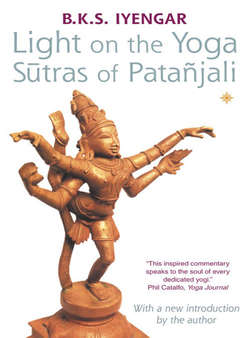Читать книгу Light on the Yoga Sutras of Patanjali - Литагент HarperCollins USD - Страница 13
Kaivalya Pada
ОглавлениеIn the fourth chapter, Patañjali distinguishes kaivalya from samadhi. In samadhi, the sadhaka experiences a passive state of oneness between seer and seen, observer and observed, subject and object. In kaivalya, he lives in a positive state of life, above the tamasic, rajasic and sattvic influences of the three gunas of nature. He moves in the world and does day-to-day work dispassionately, without becoming involved in it.
Patañjali says it is possible to experience kaivalya by birth, through use of drugs, by repetition of mantra, or by tapas (intense, disciplined effort) and through samadhi. Of these, only the last two develop mature intelligence and lead to stable growth.
Man may make or mar his progress through good actions or bad. Yogic practices lead to a spiritual life; non-yogic actions bind one to the world. The ego, ahamkara, is the root cause of good and bad actions. Yoga removes the weed of pride from the mind and helps the seeker to trace the source of all actions, the consciousness, wherein all past impressions (samskaras) are stored. When this ultimate source is traced through yogic practices, the sadhaka is at once freed from the reactions of his actions. Desires leave him. Desire, action and reaction are spokes in the wheel of thought, but when consciousness has become steady and pure, they are eliminated. Movements of mind come to an end. He becomes a perfect yogi with skilful actions. As wick, oil and flame combine to give light, so thought, speech and action unite, and the yogi’s knowledge becomes total. For others, whose knowledge and understanding are limited, an object may be one thing, experience of the object another, and the word quite different from both. These vacillations of mind cripple one’s capacity for thought and action.
The yogi differentiates between the wavering uncertainties of thought processes and the understanding of the Self, which is changeless. He does his work in the world as a witness, uninvolved and uninfluenced. His mind reflects its own form, undistorted, like a crystal. At this point, all speculation and deliberation come to an end and liberation is experienced. The yogi lives in the experience of wisdom, untinged by the emotions of desire, anger, greed, infatuation, pride, and malice. This seasoned wisdom is truth-bearing (rtambhara prajña). It leads the sadhaka towards virtuous awareness, dharma megha samadhi, which brings him a cascade of knowledge and wisdom. He is immersed in kaivalya, the constant burning light of the soul, illuminating the divinity not only in himself, but also in those who come in contact with him.
I end this prologue with a quotation from the Visnu Purana given by sri Vyasa in his commentary on the Yoga Sutras: ‘Yoga is the teacher of yoga; yoga is to be understood through yoga. So live in yoga to realize yoga; comprehend yoga through yoga; he who is free from distractions enjoys yoga through yoga.’
